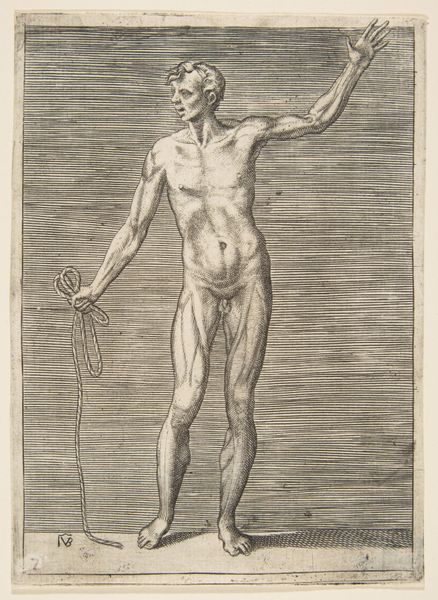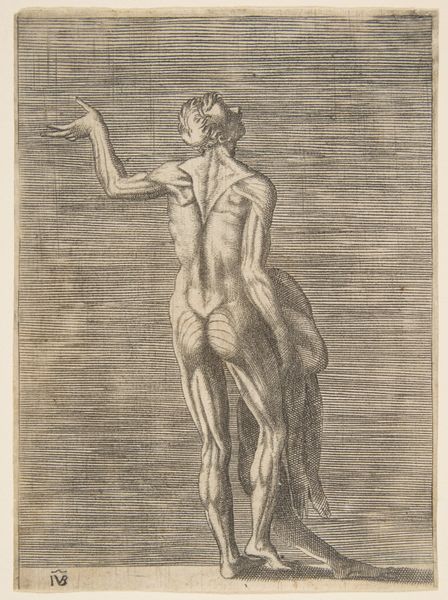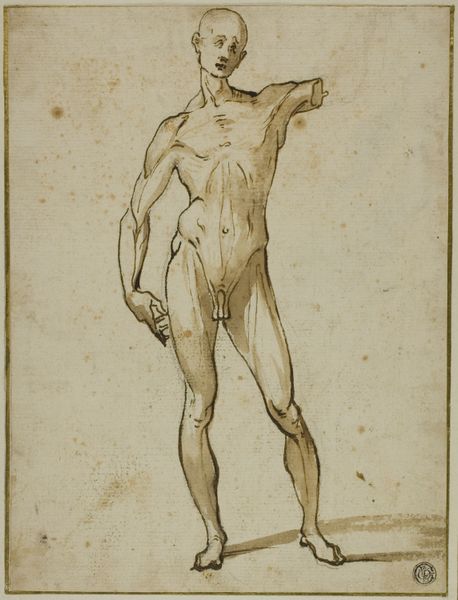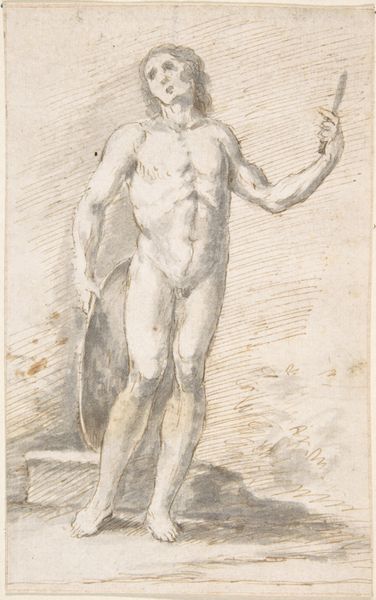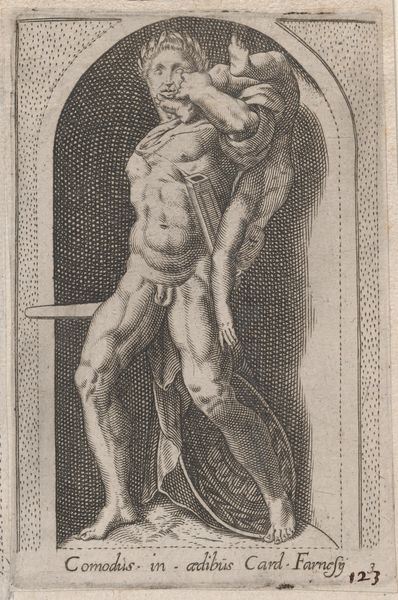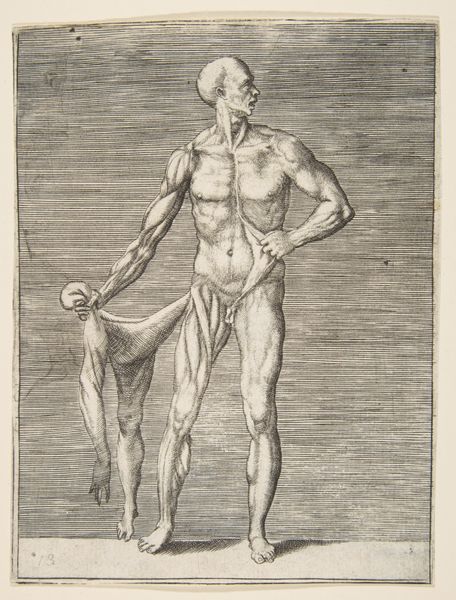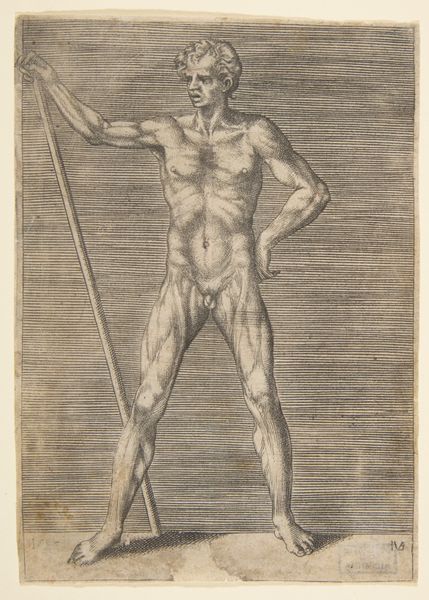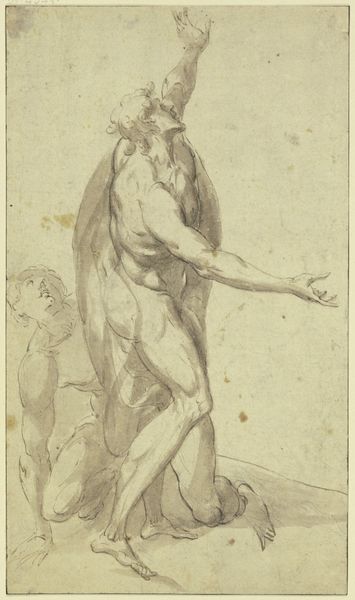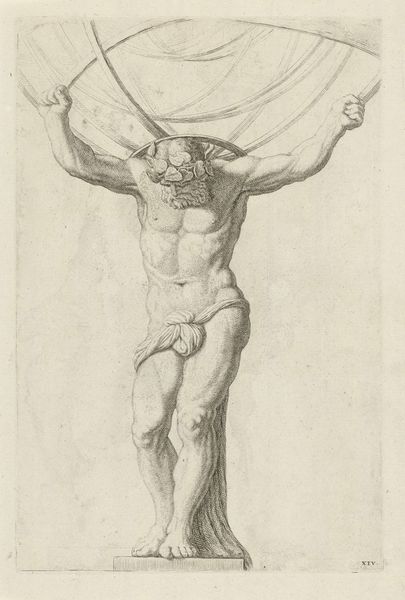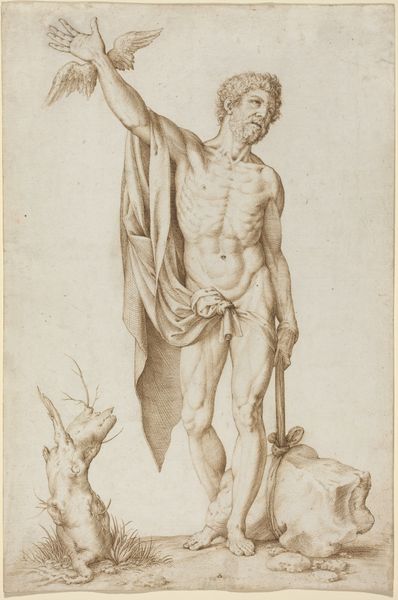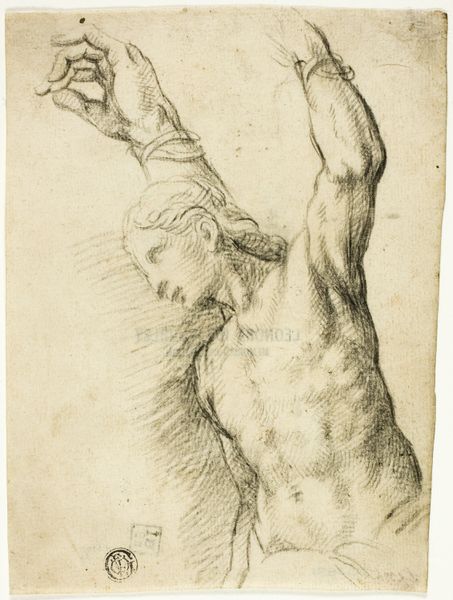
Flayed man arms raised holding the branch of a tree 1526 - 1536
0:00
0:00
drawing, print, woodcut, engraving
#
tree
#
drawing
# print
#
figuration
#
form
#
11_renaissance
#
woodcut
#
line
#
history-painting
#
italian-renaissance
#
engraving
#
male-nude
Dimensions: sheet: 5 13/16 x 4 1/8 in. (14.7 x 10.5 cm)
Copyright: Public Domain
Giulio Bonasone made this small engraving of a flayed man sometime in the 16th century. The image presents a figure from classical mythology, Marsyas, whose flaying was ordered by Apollo as punishment for hubris. The print's stark imagery, reminiscent of anatomical illustrations, speaks to the 16th century's fascination with the human body, propelled by scientific and artistic investigation. Artists during this period, driven by Renaissance humanism, sought to understand and represent the body with unprecedented accuracy. The institutional demand for anatomical studies shaped artists' exploration of the human form, as medical schools and academies commissioned detailed anatomical drawings and prints for educational purposes. By depicting Marsyas, Bonasone also engages with the social role of art at the time. This mythological narrative offered a cautionary tale about challenging authority, aligning with the conservative social norms upheld by both religious and secular institutions. The availability of such images in print form underscores the crucial role of this medium in disseminating knowledge, artistic styles, and social ideologies across Europe. By studying the prints and drawings collections of institutions like the Metropolitan Museum of Art, we can better understand the complex interplay between artistic expression, scientific inquiry, and social values in the 16th century.
Comments
No comments
Be the first to comment and join the conversation on the ultimate creative platform.

